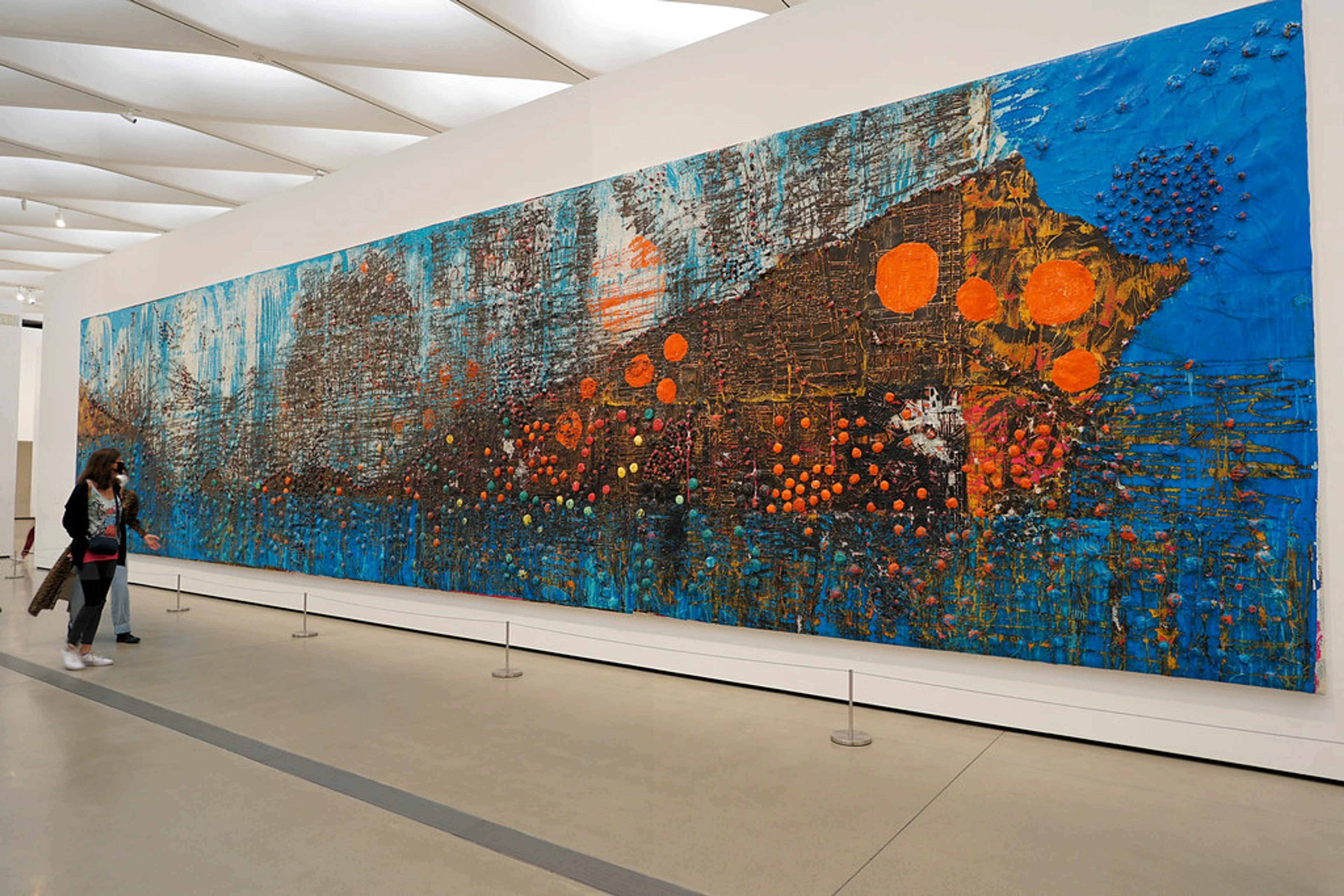
Abstract Art for Boho Sanctuary: Your Personal Guide to Curated Chaos
Transform your home into a bohemian sanctuary with abstract art. This personal guide explores styles, selection, and styling to create a soulful, authentic, and wonderfully curated space reflecting your unique story.
Abstract Art for Your Bohemian Sanctuary: A Personal Guide
You know that feeling when you walk into a home and it just feels right? Not perfect, but perfectly them? That's the magic of bohemian interior design. It's not about matching; it's about the vibes, the stories, and a wonderful sense of curated chaos. I used to think 'bohemian' meant just throwing everything colorful together, and while there's a delightful element of that, it's actually much more profound. It's a deeply personal narrative told through cherished objects, layered textures, and art that speaks to the soul, reflecting your innermost world. So, where does abstract art fit into this beautiful, lived-in tapestry? Everywhere, actually. It's the silent storyteller, the bold declaration, the subtle whisper. Through my own slightly chaotic, ever-evolving lens, I want to guide you in selecting and styling abstract art to truly complement and enrich your bohemian sanctuary. Before we dive into the brushstrokes and color fields, let me tell you a secret: I once bought a giant, brightly colored abstract piece on a whim, thinking 'more color, more boho, right?' It looked... well, it looked like a toddler had thrown paint at a canvas in a thrift store, and not even a particularly talented toddler. It taught me that 'curated chaos' isn't just chaos; it's chaos with a heart, with intention, with a story. This delicate, sometimes intuitive, balance, not just a free-for-all, is precisely what makes a bohemian space sing, and it's what we're going to explore.
What Even Is Bohemian Interior Design (to me, anyway)?
For me, bohemian design is a joyful rebellion against convention, a whispered defiance to the perfectly matched, mass-produced world. It's a love letter to the global wanderer, the free spirit who collects memories and treasures rather than adhering to rigid design rules. Think layered textiles, natural materials like rattan and wood, vintage finds with a history, plants overflowing from every corner, and art that truly resonates. Historically, the 'bohemian' lifestyle emerged in 19th-century France, associated with artists, writers, and musicians who rejected bourgeois norms, often living a nomadic, unconventional life. This spirit, a yearning for freedom and self-expression, deeply influences the design ethos we know today. Over the decades, it has evolved, embracing elements from mid-century modernism to global artisan crafts, always retaining its core of expressive individuality, comfort, and a timeless, layered aesthetic that continues to resonate today, often cycling back into contemporary trends. It’s a design philosophy that constantly reinvents itself while staying true to its roots.
My own home isn't strictly 'bohemian' – I have my moments of stark minimalism that baffle my friends and make them question my artistic sanity – but the spirit of curated eclecticism? Absolutely. It’s about building a space that evolves with you. A space that embraces imperfections. A sanctuary built from stories, not showrooms, that always feels like a warm, comforting hug after a long day. If you're curious about different artistic movements, exploring the full spectrum of art styles can offer even more context.
So, given this wonderfully loose and lived-in definition, it's no surprise that abstract art finds its perfect home within a bohemian setting.
Why Abstract Art and Boho Are a Match Made in Eclectic Heaven
Bohemian interiors aren't literal; they're about feeling, emotion, and an unquantifiable energy that whispers of adventure and authenticity. Imagine the feeling of a sun-drenched afternoon, filled with the scent of incense and old books, or the quiet hum of a distant traveler's tale – that's the kind of energy I mean. And what better way to express raw emotion, vibrant energy, and profound individuality than with abstract art? If you've ever wondered what makes abstract art compelling, it's precisely this freedom of expression.
The Emotional Resonance & Spirit of Rebellion
Abstract art doesn't tell you what to see; it asks you how to feel, inviting interpretation, conversation, and a deeper connection. This perfectly mirrors the ethos of a truly bohemian space, where every object holds a memory, every texture tells a tale. It's like finding a kindred spirit in paint and canvas – a visual metaphor for your own journey of self-discovery. Abstract art thrives on breaking rules, much like the bohemian spirit dances to its own drum, making it an ideal companion for a home that celebrates the unconventional. It's a rebellious act of beauty, perfectly at home with a collection of global treasures and a refusal to conform.
Embracing Curated Chaos
Abstract art effortlessly weaves into what I call 'curated chaos' – that beautiful balance where collected treasures and diverse aesthetics come together not by rigid design rules, but by an intuitive, heartfelt pull. Remember, "curated chaos" isn't just about throwing things together; it's about intentional layering, a thoughtful mess that tells a story. An abstract piece can be both the grounding element within this rich tapestry and the playful disruptor, adding layers of meaning that only you can fully unlock. Its creation process, often spontaneous and layered, mirrors the way a bohemian home is slowly and intuitively assembled over time, reflecting experiences and cherished memories. It can even act as a quiet anchor, a point of visual rest amidst a vibrant collection of collected treasures, offering a moment of calm amidst the beautiful expressive storm. It’s about creating a harmonious visual dialogue, where the unexpected feels perfectly at home.
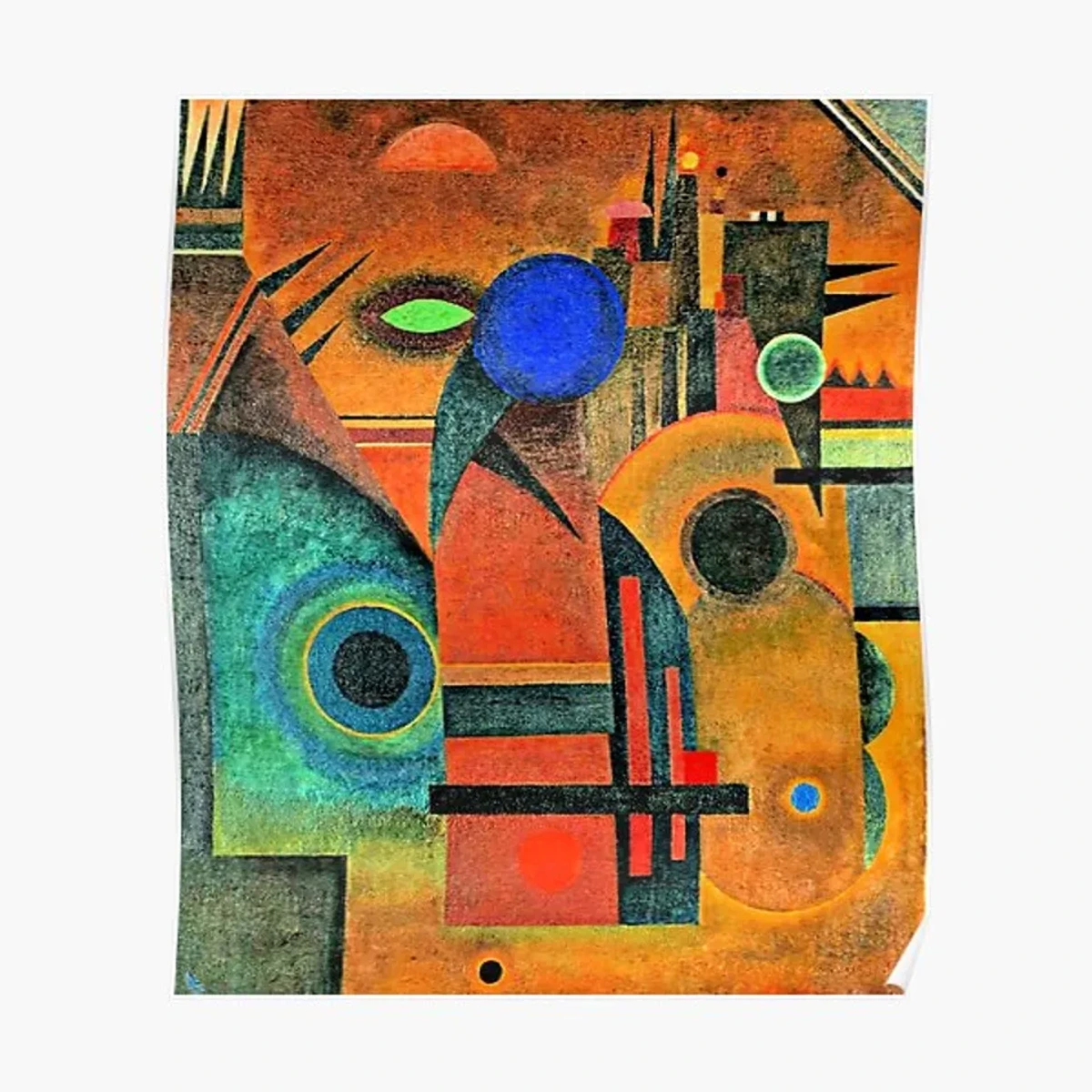
Beyond the Brushstroke: Exploring Abstract Art Styles for Your Boho Story
Abstract art isn't a monolith; it's a vast landscape of expression, and different styles can bring unique energies to your bohemian sanctuary. Understanding a few key types can help you find pieces that truly resonate, like deciphering different dialects of the same beautiful language of feeling. For instance, Geometric Abstraction with its clean lines and precise shapes can provide a grounding, structural element within an otherwise fluid boho space, offering a quiet strength. For me, it's like finding order in the beautiful mess of life, a steady beat in a freeform melody – a necessary counterpoint to the organic flow of a bohemian room. You can see this principle in action with pieces like Piet Mondrian's "Composition No. IV".
In contrast, Lyrical Abstraction often features organic forms, sweeping brushstrokes, and intense color, echoing the free-flowing, intuitive, and deeply personal nature of bohemian design, almost like a visual poem that sings with emotion. If you're drawn to art that channels raw emotion and untamed energy, then Abstract Expressionism – where the artist's gestures and emotions are central, like in action painting – is a style you'll want to explore. Dive deeper into its history and impact with my guide to Abstract Expressionism.
And then there's Color Field Painting, which uses large, flat areas of color to evoke a meditative, expansive feeling – ideal for creating a calm anchor amidst vibrant textures. Think of a Rothko-esque expanse of deep blue, drawing you into quiet contemplation. My own journey with Color Field Painting has taught me the power of vast, emotional landscapes on canvas, offering a space for quiet introspection.
But let's not stop there. Consider Minimalist Abstraction, with its pared-down forms and often muted palettes, which can offer a wonderfully calming counterpoint to a vibrant boho room, preventing visual overwhelm and providing moments of serene visual rest amidst a collection of treasures. Or perhaps Abstract Surrealism, which can infuse a dreamlike, narrative quality, transforming your wall into a window to another, more whimsical dimension – perfect for the deeply personal storytelling of a bohemian home and a delightful invitation to let your imagination wander.
Each style is a different dialect of the same beautiful language of feeling, waiting to tell a part of your home's unique story. Sometimes, it helps to see it laid out simply:
Abstract Art Style | Key Characteristics | Bohemian Connection | Why it fits Boho |
|---|---|---|---|
| Geometric Abstraction | Clean lines, basic shapes, structured compositions | Provides grounding, structural balance, quiet strength amidst fluidity | Offers a peaceful counterpoint to organic textures; a visual anchor in expressive rooms. |
| Lyrical Abstraction | Organic forms, fluid lines, sweeping brushstrokes, rich color | Reflects free-flowing, intuitive, personal expression, visual poetry | Mimics nature's curves and untamed beauty; evokes a sense of freedom and movement. |
| Abstract Expressionism | Raw emotion, gestural marks, spontaneous action | Untamed energy, self-discovery, breaking rules, bold declarations | Channels the free spirit; speaks of adventure, authenticity, and passionate expression. |
| Color Field Painting | Large, flat areas of saturated color, minimalist | Creates calm anchors, expansive meditative feelings, encourages introspection, balances vibrant textures | Provides moments of serene calm; allows for emotional depth without visual clutter; a meditative backdrop. |
| Minimalist Abstraction | Pared-down forms, muted palettes, focus on essential elements | Offers calming counterpoint, prevents visual overwhelm, creates visual rest | A quiet space for the eyes amidst rich patterns; enhances other elements by offering simplicity. |
| Abstract Surrealism | Dreamlike, symbolic, often unsettling or whimsical imagery | Infuses narrative, adds whimsical mystery, sparks imagination, deepens personal storytelling | Fuels imagination and personal narrative; adds an element of whimsical mystery and profound introspection. |
The Language of Materials: Beyond Just the Image
While we often focus on what an abstract piece looks like, the physical materials used in its creation – be it thick oils, fluid acrylics, or layered mixed media – play a crucial role in how it feels in your bohemian space. Visible brushstrokes and heavy impasto (a technique where paint is laid on thickly, creating a textured surface) invite touch, creating a tactile experience that complements natural fibers and distressed wood. A glossy resin finish might add a modern sheen, contrasting beautifully with matte textures elsewhere, while a raw, unprimed canvas can enhance an earthy, organic vibe. These material choices aren't just technical details; they're extensions of the art's soul, adding another layer of sensory richness to your sanctuary. However, some highly polished, industrial materials might clash with the inherently organic and warm feel of a boho space. It’s about finding materials that feel natural and authentic, not overly sterile or manufactured. For a deeper dive into how different elements coalesce, my thoughts on the role of texture in abstract art might resonate.
My Guiding Principles for Choosing Abstract Art for Your Boho Sanctuary
Choosing art for your home can feel daunting, especially when you want it to feel authentic and personal. But trust me, it doesn't have to be. Here are my thoughts on how to approach it, a guide from my heart to yours:
1. Color and Mood: Don't Overthink It, Feel It
How does a piece make your gut clench (in a good way, not indigestion) or your heart sing? Forget the color wheel for a second. Bohemian spaces are renowned for their rich, often earthy or jewel-toned palettes, but that doesn't mean every piece needs to be a riot of color. Sometimes, a quiet whisper is more powerful than a shout. A deep, soulful abstract blue can ground a vibrant room, offering a sense of calm and depth – if that's a feeling you crave, explore more about blue's power and its psychological impact. Similarly, a burst of yellow can be the sunbeam your corner desperately needs, infusing joy and optimism; a delightful jolt when life feels a bit grey. It's about complementary energies, about creating a visual symphony where each note, whether quiet or loud, contributes to the overall harmony. I once stumbled upon a vibrant orange abstract that felt completely out of place at first – my internal minimalist screamed, quite loudly actually – but its sheer, unadulterated joy was contagious, transforming a subdued nook into a pocket of pure optimism, a testament to a wild adventure or a cherished memory. Understanding the emotional language of color is far more important than rigid rules when decorating your home. After all, your home should feel like you, not a catalog. Does the color tell your story, even if it's a story only you can fully interpret?
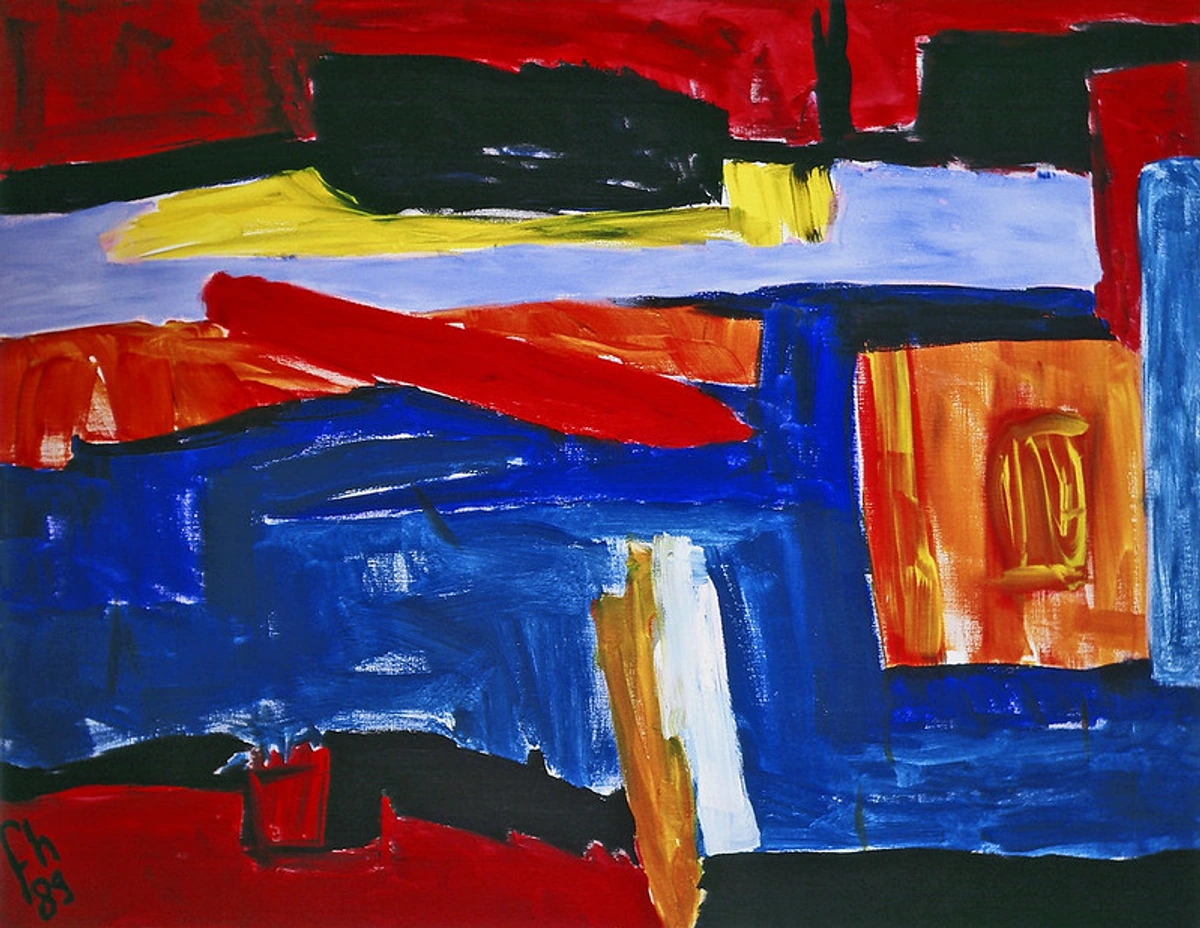
https://www.flickr.com/photos/abstract-art-fons/30634352376, https://creativecommons.org/licenses/by/2.0/
2. Texture and Tactility: A Feast for the Senses
Boho loves texture – it's a feast for the senses, isn't it? Woven rugs, macrame hangings, velvet cushions, distressed wood – each element begs to be touched, experienced. Abstract art, especially pieces with visible brushstrokes, thick impasto, mixed media elements like collage, or even textured canvases, adds another delicious layer to this tactile experience. It's not just something to look at; it's something you almost want to reach out and touch, inviting you into its physical presence. These textures create depth and warmth, making a space feel inviting and lived-in, complementing natural fibers or aged wood perfectly. It’s about creating an environment that engages all your senses, not just your sight. My explorations into mixed media have taught me how much these physical qualities enrich the visual narrative, pulling you closer into the artwork, much like a well-loved quilt, inviting you to run your fingers over its history. If the idea of blending materials excites you, my insights into mixed media might just spark your next creative project, transforming your art into a truly sensory experience.
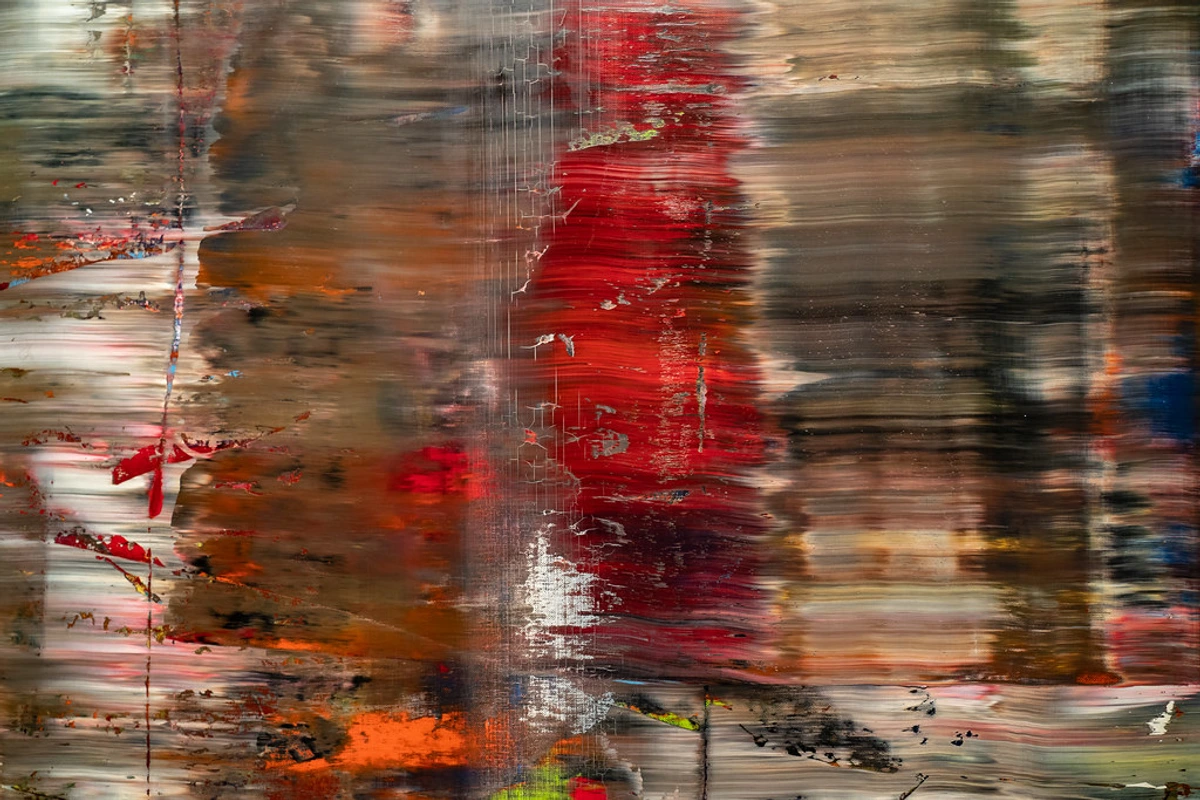
https://live.staticflickr.com/65535/53064827119_1b7c27cd96_b.jpg, https://creativecommons.org/licenses/by-nc-nd/2.0/
3. Scale and Placement: The Art of the Unexpected
This is where the 'rules are meant to be broken' adage truly shines, often much to the chagrin of traditional interior designers (bless their perfectly aligned hearts). Don't be constrained by conventional hanging heights or matching sizes. A collection of small pieces nestled among books on a shelf, a huge canvas commanding an entire wall, or even cleverly placed abstract art for small spaces – it's all about creating moments and vignettes. Don't be afraid to:
- Lean art against a wall, letting it rest casually as if it belongs there organically.
- Layer it in front of a mirror, adding depth and reflection to the composition.
- Tuck it into an unexpected corner, creating a quiet discovery for curious eyes.
- Place smaller pieces on a mantelpiece or bookshelf, nestled among treasured objects.
- Prop a large canvas directly on the floor, leaning against a wall, to create an effortlessly cool, grounded statement.
It adds to the collected, eclectic feel, like your home is constantly whispering secrets about its inhabitants. Remember that initial fear of "getting it wrong"? That's your cue to experiment! Imagine a tiny, vibrant abstract nestled amongst a pile of well-worn travel books, a quiet discovery, or a commanding piece leaning against a wall behind a vintage armchair, drawing you into its world. This flexibility is key to letting your art truly enhance your home's story. If you're seeking to make a bold statement, learning how to create a focal point can guide your choices.
While embracing the unexpected, also consider the art's scale in relation to your room and furnishings. A very large abstract piece can be a powerful focal point, anchoring a room filled with smaller, collected items, providing a sense of scale and purpose. But be mindful: an overly massive artwork might overwhelm a tiny space, even if placed unconventionally. It’s about creating a balanced visual dialogue, where the art feels at home. If you're wrestling with maximizing impact in compact areas, my guide on abstract art for small spaces might offer some liberating ideas. Ultimately, it's about finding what feels right for your eye and your space, not what a design magazine dictates. Your home, your rules.
4. The Narrative (Even if it's Abstract): What Does It Say to You?
Beyond its physical presence and visual impact, every piece you choose adds to your home's unique narrative. Even if it's just a feeling, an energy, or a memory, that's its story. What does this abstract piece feel like? What emotion does it evoke in you? Does it make you pause, smile, or perhaps even feel a slight, inexplicable melancholy? Sometimes, I wonder if abstract pieces have secret lives when I'm not looking, telling their own intricate stories to the dust motes dancing in the sunlight, becoming characters in an ongoing domestic drama. Perhaps a sweeping, gestural abstract piece reminds you of the wild, untamed spirit of a journey taken, a representation of wanderlust or freedom, or even a personal philosophy about life's unpredictable path. Or a serene color field calms your bustling mind after a long day, a visual cue for introspection and peace, like a quiet friend. It’s a deeply personal dialogue. Does the artwork reflect a part of your inner world, a cherished experience, or a philosophical stance? If you often find yourself pondering the hidden messages in non-representational works, my thoughts on decoding abstract art or demystifying the abstract might offer some illuminating perspectives on how abstract art becomes part of your home's story.
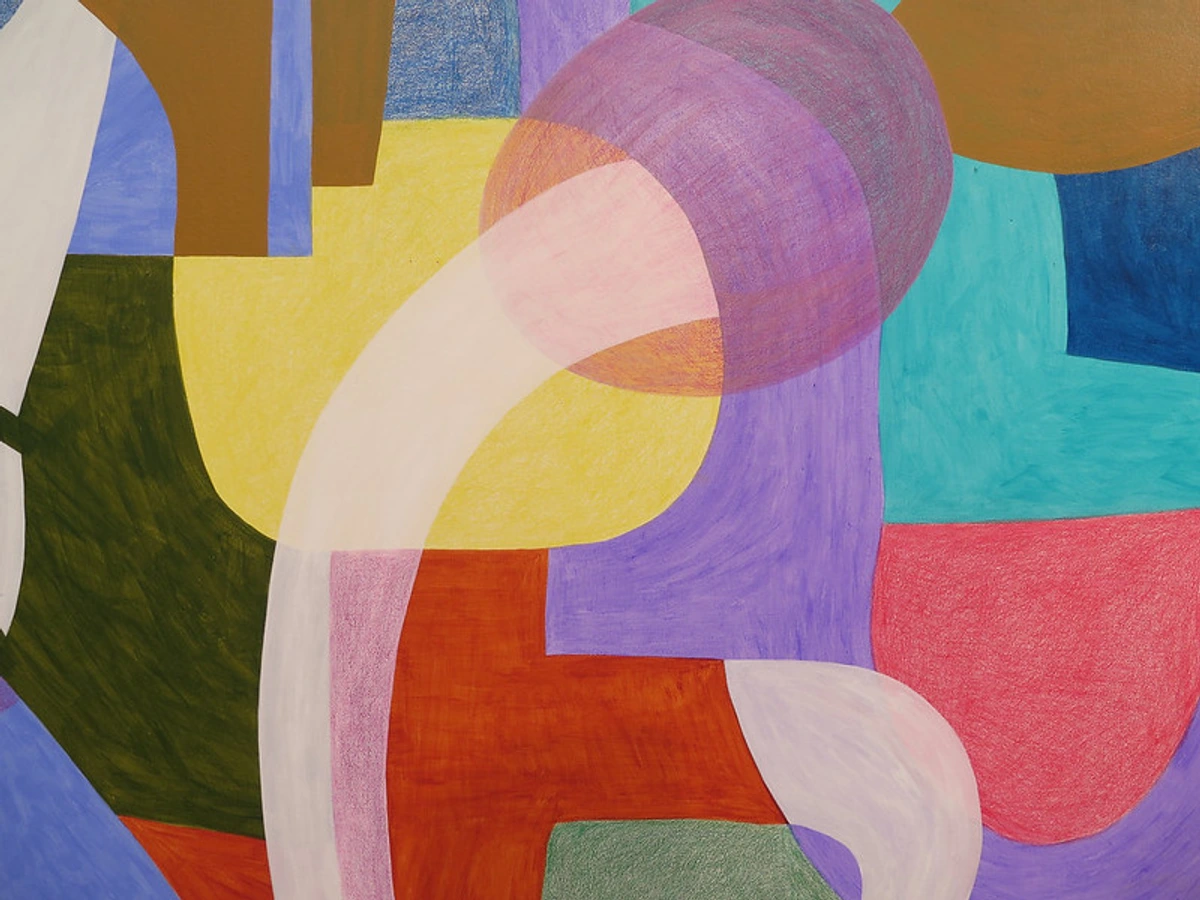
https://www.flickr.com/photos/42803050@N00/31171785864, https://creativecommons.org/licenses/by-nd/2.0/
The Hunt for Treasure: Finding Your Perfect Abstract Piece
Part of the bohemian magic is the thrill of the hunt. Finding abstract art for your space isn't just about buying; it's about discovering, like an archaeologist unearthing ancient, colorful secrets. It's an adventure in itself, connecting you to the story behind each brushstroke. My journey from aspiring artist to selling my own abstract art online has shown me the incredible diversity and accessibility available today, and you can explore some of my art for sale if you're curious.
Online Discovery & Direct Support
Online marketplaces like Etsy, Saatchi Art, or even specific artist websites offer an incredible array of styles and artists from around the world, making it easy to unearth that perfect piece from the comfort of your couch. There's a particular joy in finding a piece that truly speaks to you and knowing you're supporting an independent artist, contributing to their journey – perhaps even finding something unique from artists like me. When you purchase directly from an artist, you're not just acquiring an object; you're investing in a human story, often aligning with the authentic, community-focused spirit of bohemian living. It's about building connections and celebrating the human hand behind the work. For insights into this world, explore the joy of discovery: finding emerging abstract artists for your collection.
Offline Adventures & Budget-Friendly Finds
I love wandering through local art fairs and small galleries, feeling the raw energy of new creations, the faint scent of turpentine and ambition. Don't forget vintage shops, flea markets, or even your grandmother's attic – sometimes an overlooked abstract print with a distressed frame is exactly what your bohemian wall needs, a pre-loved piece adding to your home's unique history. These 'found objects' can sit beautifully alongside or even become abstract art in their own right, adding layers of unexpected stories. For those on a budget, creating your own abstract art can be incredibly rewarding and deeply personal, infusing your sanctuary with your own creative energy. Even a visit to a local art museum like mine in 's-Hertogenbosch can spark inspiration and help you refine what truly moves you, offering a chance to see how different abstract styles feel in a curated space. It's about letting curiosity lead the way, embracing serendipity, and trusting your gut, even if your gut sometimes leads you to a suspiciously cheap velvet painting of Elvis. The journey of discovery is as much a part of the bohemian experience as the art itself.
Commissioning a Personal Masterpiece
And for the ultimate personalized statement, consider commissioning a piece that's created specifically for your sanctuary, tailored to your unique story and vision – a deeply meaningful investment that transforms your walls into a direct reflection of your soul. Imagine an artwork that embodies a specific memory, a journey, or an emotion that is entirely yours. It's a dialogue with an artist, resulting in something truly bespoke and imbued with personal significance. This is perhaps the most profound way to integrate art into your personal narrative.
![]()
https://www.rawpixel.com/image/5924320/photo-image-background-public-domain-art, https://creativecommons.org/publicdomain/zero/1.0/
Framing Your Freedom: The Boho Approach to Display
When it comes to abstract art in a bohemian setting, framing isn't about rigid convention; it's another opportunity for expression, another brushstroke in your personal narrative. Sometimes, no frame at all makes the boldest statement, letting the canvas breathe and blend seamlessly into a raw, natural aesthetic – perfect if you want the art to truly feel part of the wall, rather than merely hung upon it. For a touch of rustic charm, consider distressed wooden frames that tell their own story, or even salvaged, mismatched frames that add to the collected feel of a gallery wall (my inner rebel delights in mismatched frames). Natural wood frames, especially with visible grain, beautifully complement boho decor's emphasis on organic materials. Floating frames can be wonderful for contemporary abstracts, giving the art a sense of lightness and depth without imposing a heavy border, almost like the artwork is hovering. Remember, the frame should enhance the art and the room's vibe, not dictate it. It's about creating a harmonious visual dialogue with your wall, reflecting the same freedom you find in the art itself. For broader inspiration on making your walls sing, you can find more tips on how to decorate a wall in a way that truly brings your art to life.
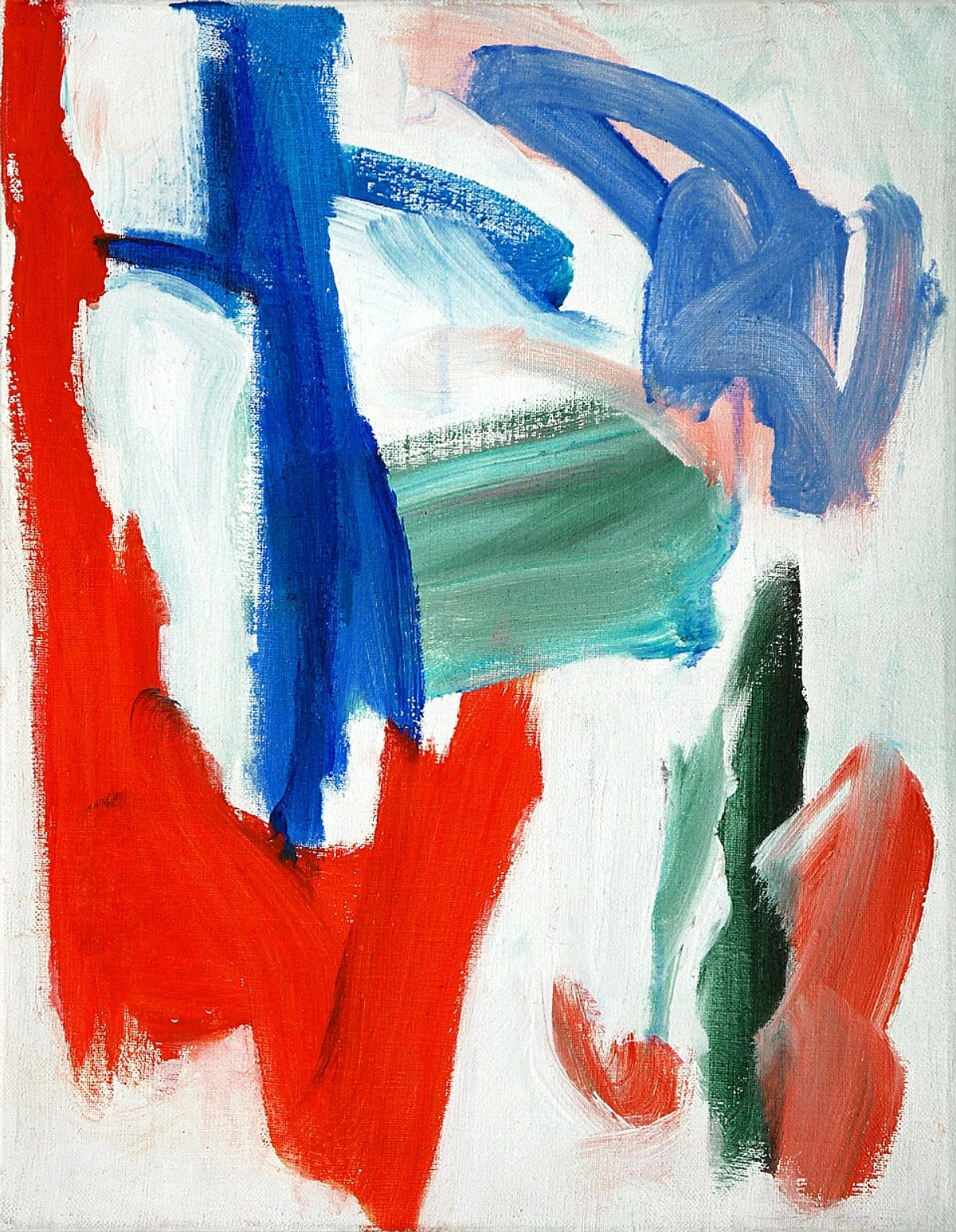
https://commons.wikimedia.org/wiki/File:%27Abstract_sky%27,1993-_small_acrylic_painting_by_Dutch_artist_Fons_Heijnsbroek;_free_download_abstract_art_image,_CCO.jpg, http://creativecommons.org/publicdomain/zero/1.0/deed.en
Styling Your Abstract Art in a Bohemian Space: It's All About the Vibe
Once you've found your perfect pieces and decided how to frame them (or not!), the real fun begins: styling! This is where you get to play curator of your own little museum of life.
1. Gallery Walls & Layering: Embrace the 'More is More' Philosophy with Intention
Bohemian design is the ultimate playground for gallery walls – a true 'more is more' philosophy, but with intention. Mix and match frames, sizes, and mediums with abandon. Don't be afraid to combine your abstract print with a vintage mirror, a framed botanical illustration, a personal photograph, or even a textile hanging. The more disparate the elements, the more cohesive and 'collected' the feel becomes – like a well-loved cabinet of curiosities, each item telling a fragment of a larger, flowing narrative. For instance, an abstract piece with fluid lines could sit beside a stark architectural photograph, balanced by a vibrant macrame plant hanger nearby. It's about letting each piece contribute to a vibrant tapestry of your life and loves, rather than demanding individual attention. To create visual interest and depth, try these techniques:
- Layering: Lean smaller pieces in front of larger ones, or against a tall piece of furniture, creating an inviting visual depth. I once layered a small, vibrant abstract in front of a larger, more subdued canvas, and the unexpected contrast created a captivating focal point.
- Asymmetrical Balance: Instead of perfect symmetry, aim for visual weight balance. A large, bold piece on one side can be beautifully balanced by a cluster of smaller, perhaps more intricate items on the other. It feels organic and natural, like elements arranging themselves over time.
- Vary Textures: Combine smooth prints with heavily textured canvases, rough-hewn wooden sculptures, metal objects, or soft woven wall hangings. This tactile variety prevents the wall from feeling flat and engages more of your senses.
- The 'Invisible Thread': Find a common element – perhaps a recurring color palette (even subtle echoes), a particular material (like natural wood or brass accents), or a shared theme (like nature or travel) – that subtly ties your diverse collection together, making the chaos feel curated. This thread is often more felt than seen, guiding the eye without imposing rigid rules. Learn more about curating a dynamic gallery wall that reflects your unique taste and avoids looking like a random explosion of stuff.
2. Balancing Visual Elements: A Harmony of Chaos
While the bohemian aesthetic celebrates abundance and eclecticism, there's a fine line between 'curated chaos' and simply 'too much.' It’s about creating breathing room, allowing each treasured item, including your art, to be appreciated without overwhelming the senses. When integrating abstract art, especially bold or highly textured pieces, consider how it interacts with other visual elements in the room. If your abstract piece is a riot of color and form, perhaps pair it with more subdued textures or simpler furnishings nearby. Conversely, a minimalist abstract could act as a quiet anchor in an otherwise vibrant, pattern-rich space, offering visual relief. Ask yourself: does this piece add to the story, or does it scream over the existing narrative? It’s a subtle dance between exuberance and serenity, a conversation rather than a monologue.
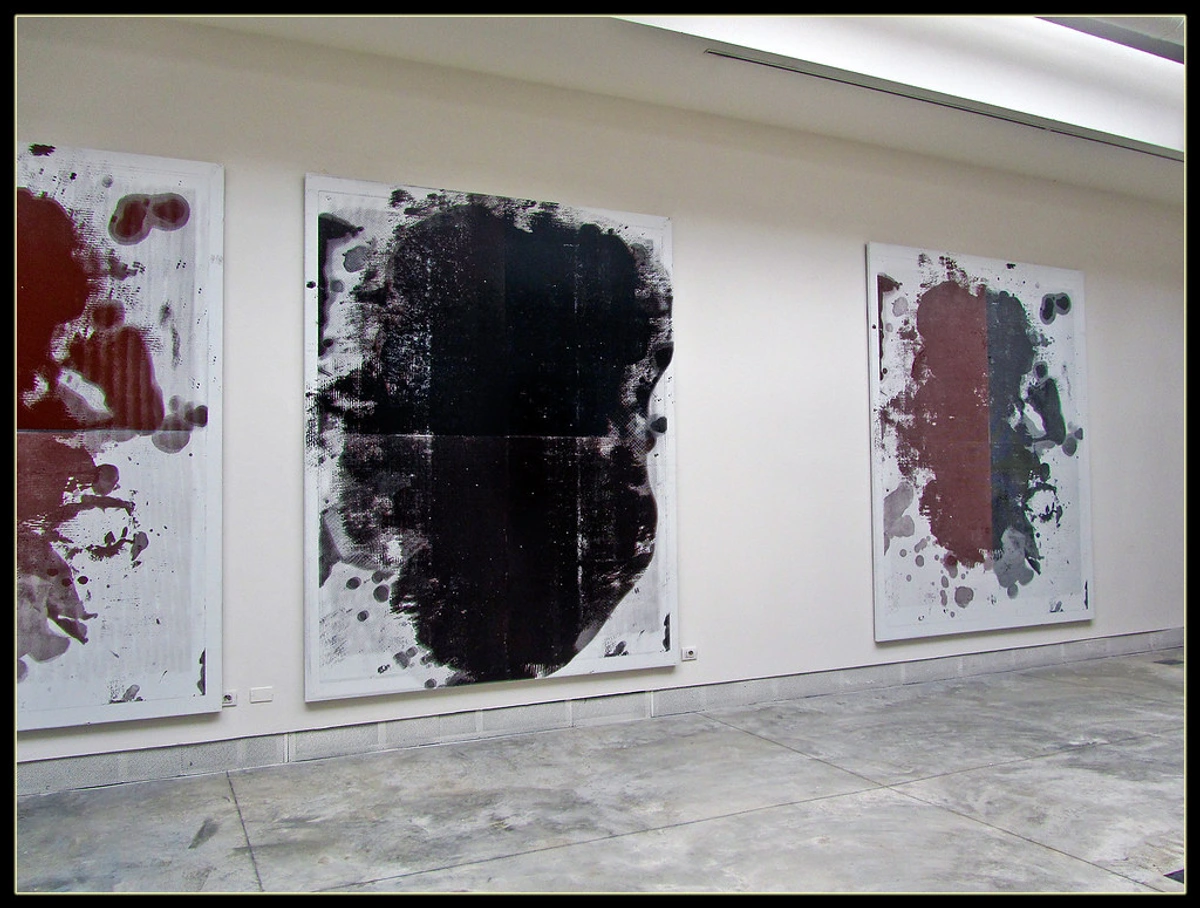
https://live.staticflickr.com/6195/6087778411_164f0d9a2f_b.jpg, licence
3. Mixing Eras and Styles: A Timeless Blend
Don't limit yourself to only 'contemporary' abstract art. The beauty of bohemian is its ability to effortlessly blend, defying the rigid categorizations of art history. A vivid Henri Matisse print with its bold forms and colors can sit beautifully next to a more modern abstract piece you picked up from a local artist, or even a compelling Gerhard Richter piece. The juxtaposition of different artistic voices and time periods creates a richer, more engaging space, like a conversation across centuries. I once saw a vibrant, raw piece by an artist like Jean-Michel Basquiat, with its street-art energy and complex symbolism, find a surprising home amidst more serene, organic abstract forms in a sun-drenched reading nook, creating a compelling dialogue between urban grit and natural calm. It's a rule-breaking approach that celebrates personal connection over conventional art history, turning your home into a living museum of your own design. If you're curious about the masters, delve into guides on artists like Matisse, Richter, and Basquiat to see how their works could inspire your own eclectic blend.
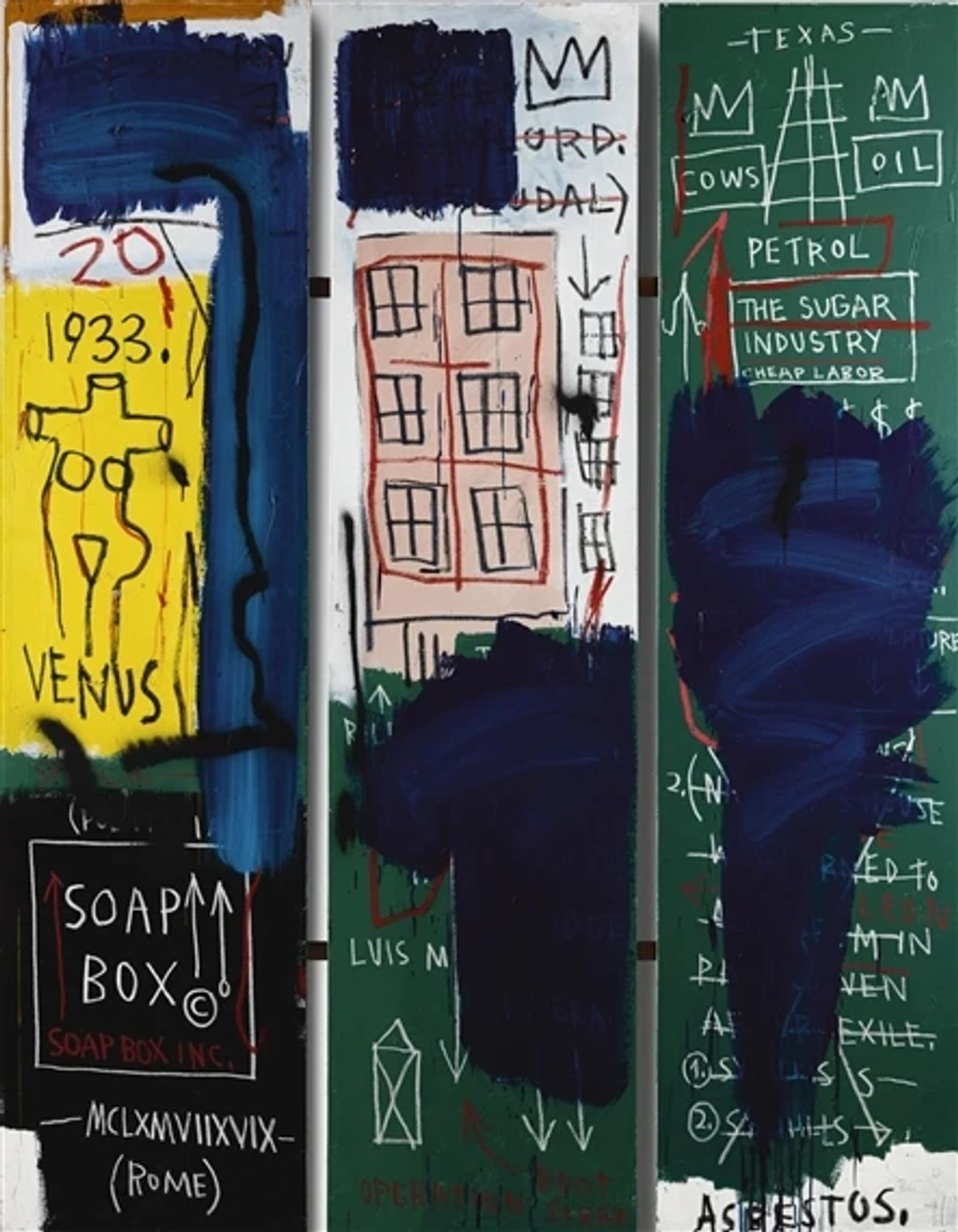
https://upload.wikimedia.org/wikipedia/commons/b/b2/Untitled_Jean-Michel_Basquiat_.webp, https://creativecommons.org/licenses/by-sa/4.0
4. Natural Elements as Companions: The Softening Touch
Plants, wooden furniture, woven baskets, ceramic pots – these natural elements are the perfect companions for abstract art in a bohemian setting, acting as gentle counterpoints to the art's sometimes intense energy. They soften the bold lines and sometimes vibrant colors of abstract pieces, bringing an organic flow and a sense of calm to the space. If you're a plant parent, you already know the magic a bit of greenery adds! The vibrant, ever-changing life of plants contrasts beautifully with the static energy of the art, creating a dynamic, living composition and enhancing the tactile richness of the room. It’s a wonderful dialogue between the created and the natural, adding a breath of fresh air and life to your artistic arrangements.
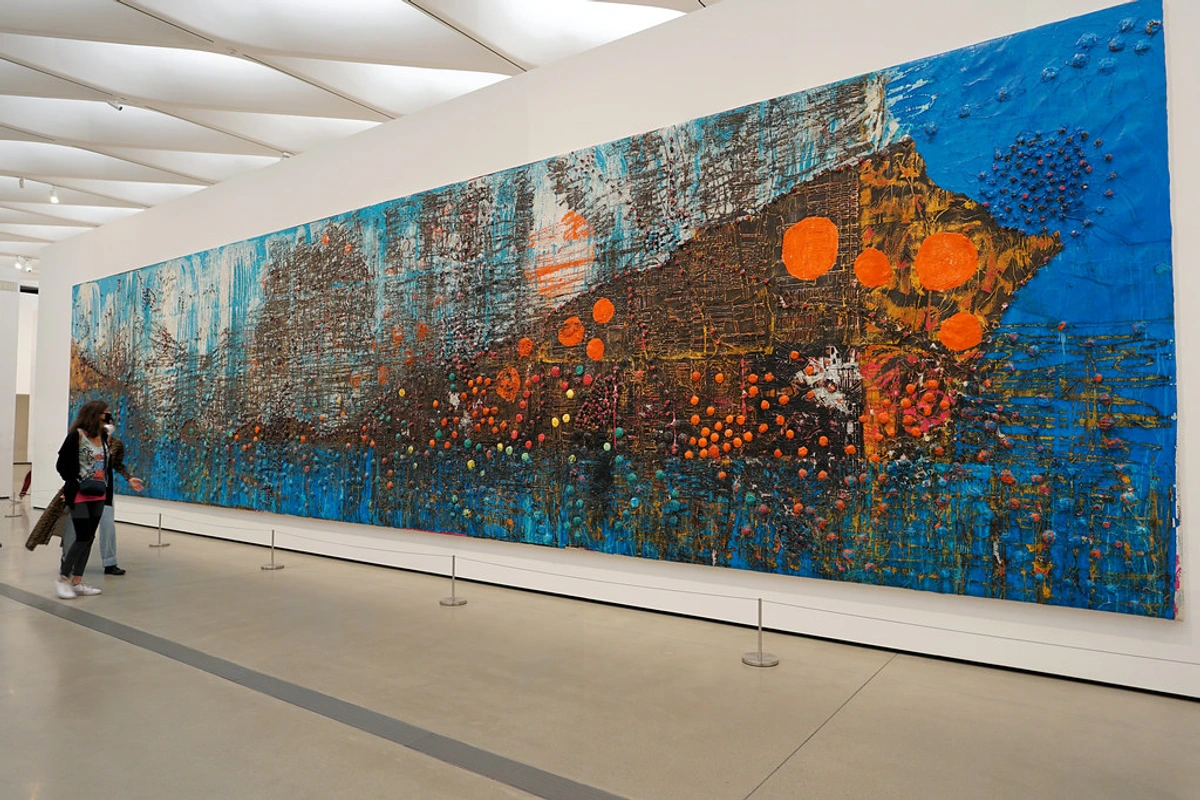
https://live.staticflickr.com/65535/52756888197_ece375ce5f_b.jpg, licence
5. Creating Cozy Corners: Moments of Introspection
Instead of just filling walls, think about creating little altars to beauty – small, intentional moments that invite contemplation. A comfy armchair, a side table with a few treasured books and perhaps a steaming cup of tea (or coffee, if you're a morning person, which I am decidedly not), and an abstract piece thoughtfully placed above it can transform a forgotten nook into a quiet corner for introspection, dreaming, or simply being. It's about creating intimate moments within the larger bohemian tapestry, spaces where you can truly connect with your chosen art and your inner self. If the idea of carving out a personal haven resonates with you, exploring curating your personal sanctuary might offer deeper insights into fostering mindfulness and serenity through your surroundings. How do you find those pockets of peace amidst the beautiful chaos of life?
A Gentle Touch: Caring for Your Abstract Treasures
In a home that celebrates the lived-in and the authentic, caring for your art doesn't have to be a sterile, museum-like affair. Treat your abstract pieces with the same gentle respect you'd give a beloved vintage textile or a cherished, fragile plant. For most works, a soft, dry cloth is all you need for dusting, much like you'd gently wipe down a favorite wooden sculpture. If you have pieces with significant texture or mixed media elements, a soft brush (like a clean makeup brush or a soft paintbrush) can get into the crevices. Always avoid direct sunlight, which can fade colors over time, and keep them away from excessive moisture or extreme temperature changes. A little mindful attention ensures your art continues to tell its vibrant story for years to come, a testament to its enduring place in your evolving sanctuary.
Key Takeaways for Your Boho Art Journey
Before you go forth and curate your sanctuary, here are the essential whispers from my own creative journey:
- Embrace Intuition Over Rules: Let your gut guide you. If a piece speaks to you, it belongs.
- Curated Chaos is Intentional: It's not random. It's about thoughtful layering and finding an 'invisible thread' to unify disparate elements.
- Texture & Materials Matter: Engage all your senses. The physical qualities of art add immense depth to your bohemian space.
- Play with Scale & Placement: Break conventions. Lean, layer, and place art unexpectedly to create unique vignettes.
- Art Tells Your Story: Choose pieces that reflect your journey, emotions, and philosophical stance. It's a dialogue with your inner self.
- Mix Styles & Eras: Don't be confined by categories. A timeless blend creates a richer, more authentic home.
- Natural Elements are Allies: Plants and organic textures soften and complement abstract art beautifully.
- Create Moments, Not Just Walls: Design cozy corners for introspection, inviting you to connect with your art.
Embrace the Beautiful Chaos: Your Boho Art Story Awaits
Ultimately, your home is your sanctuary, not a showroom. It’s a testament to your journey, your passions, and your ever-evolving self. Don't be afraid to break your own rules (or mine, though I'd be subtly flattered) when it comes to choosing and styling abstract art for your bohemian space. If a piece speaks to you, if it ignites a feeling or sparks a memory, then it belongs. Trust your intuition, embrace the imperfections – because true beauty often lies in the lived-in, the slightly askew – and let your unique story unfold across your walls. Every brushstroke, every color, every placement is a reflection of you. So go forth, explore, and let your home become the most authentic, beautiful, and wonderfully chaotic expression of you.
And if you're curious about my own artistic journey, the philosophical wanderings that shape my work, or just want to see if I ever truly achieved minimalist sanity, feel free to explore my artist timeline. I'd genuinely love to hear about your own boho art discoveries and delightful design dilemmas too – the creative journey is always better when shared, isn't it?




